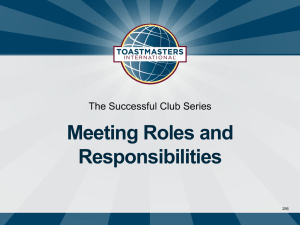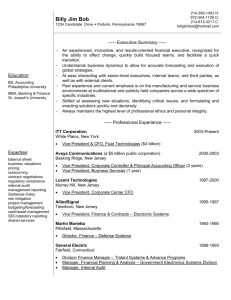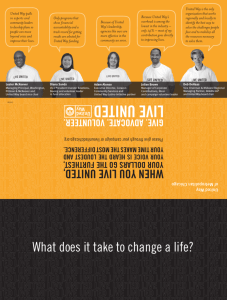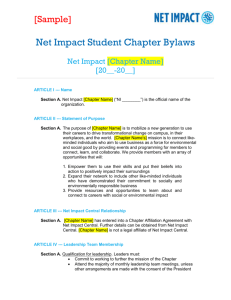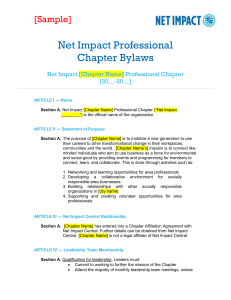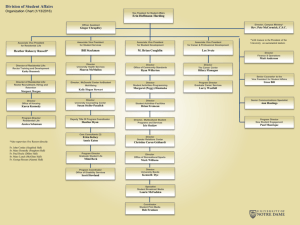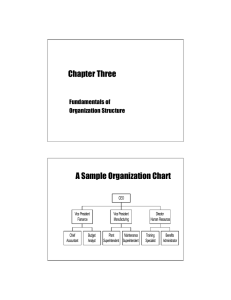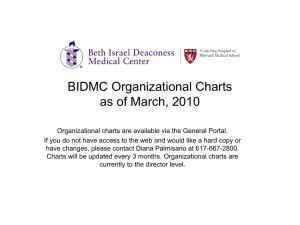Introduction
advertisement
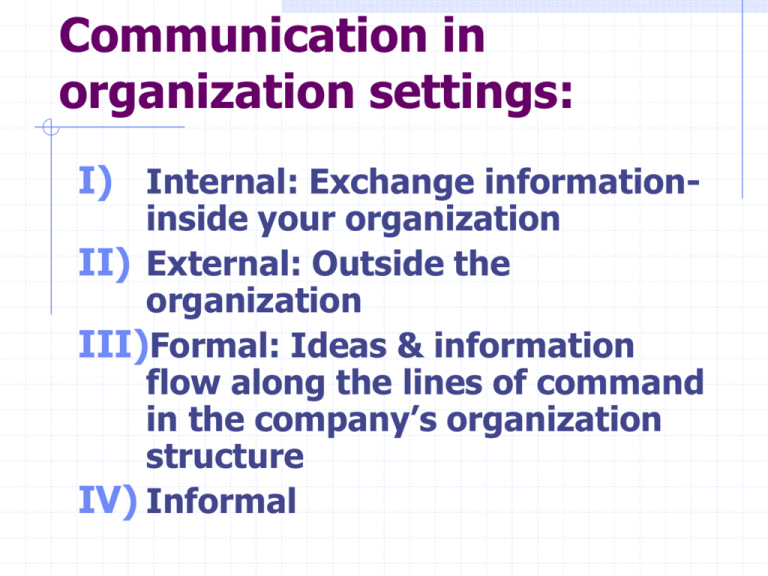
Communication in organization settings: I) Internal: Exchange information- inside your organization II) External: Outside the organization III)Formal: Ideas & information flow along the lines of command in the company’s organization structure IV) Informal Factors determining the structure 1) 2) 3) 4) Aim Division of labor & specialization level Degree of formality Span of management: R=N(2N/N-(N+1) 5) Number of hierarchical levels 6) Departmantization I) Functional Departmantization President Vice president of finance Accounting manager Financial manager Vice President of R&D Vice President of Engineering Director of Research Director of Development Plant Manager II) Departments founded according to product/service divisions President Manager of A Product Vice president of finance Accounting manager Financial manager Manager of B Product Vice President of R&D Vice President of Engineering Vice President of R&D Director of Research Director of Development Plant Manager Director of Research Director of Development III) Departments founded according to Regional Essentials President Director of Region A Functional OR Product/Service Divisions Director of Region B Director of Region C IV) Pure Organizations President Vice president of finance Vice President of R&D Vice President of Project X Accounting manager Financial manager Director of Engineering Director of Production Director of Accounting V) Matrix Organizations Dir. Eng. Director of Project X Director of Project Y Director of Project Z President Dir. Product. Dir. Acc. Dir. Fin. Flow of Information: 1. Downward flow: From executives to employees 2. Upward flow: From employees to executives- provide accurate, timely reports on problems 3. Horizontal flow: Lateral or diagonal between departments or between employees at the same level- share information and coordinate tasks Formal Informal Internal External Planned com. Planned com. among insiders among outsiders Casual com. among employees Casual com. With suppliers, customers investors & outsiders Communication Networks 1) Y Form: No innovation, faster than circle, faster than circle & network 2) Chain: Just downward, no upward & horizontal. Leader- not accurate. Medium speed. 3) Star:Employees- interaction just with the leader. No innovation. High speed, but effects 4) Circle: Decision-making, participation, no determined leader, working speed, satisfaction 5) Network: Centralization level- low, participation, job satisfaction & job quality Centralization: distribution of decision-making Job Enlargement Increasing the scope of a job through extending the range of its job duties Increases the number of tasks without changing the content of the job Horizontal job loading Job Enrichment Motivate by giving employees the opportunity to use the range of their abilities Vertical job loading Enriched job should contain: Range of tasks of varying difficulties Meaningful task Feedback, encouragement & communication
